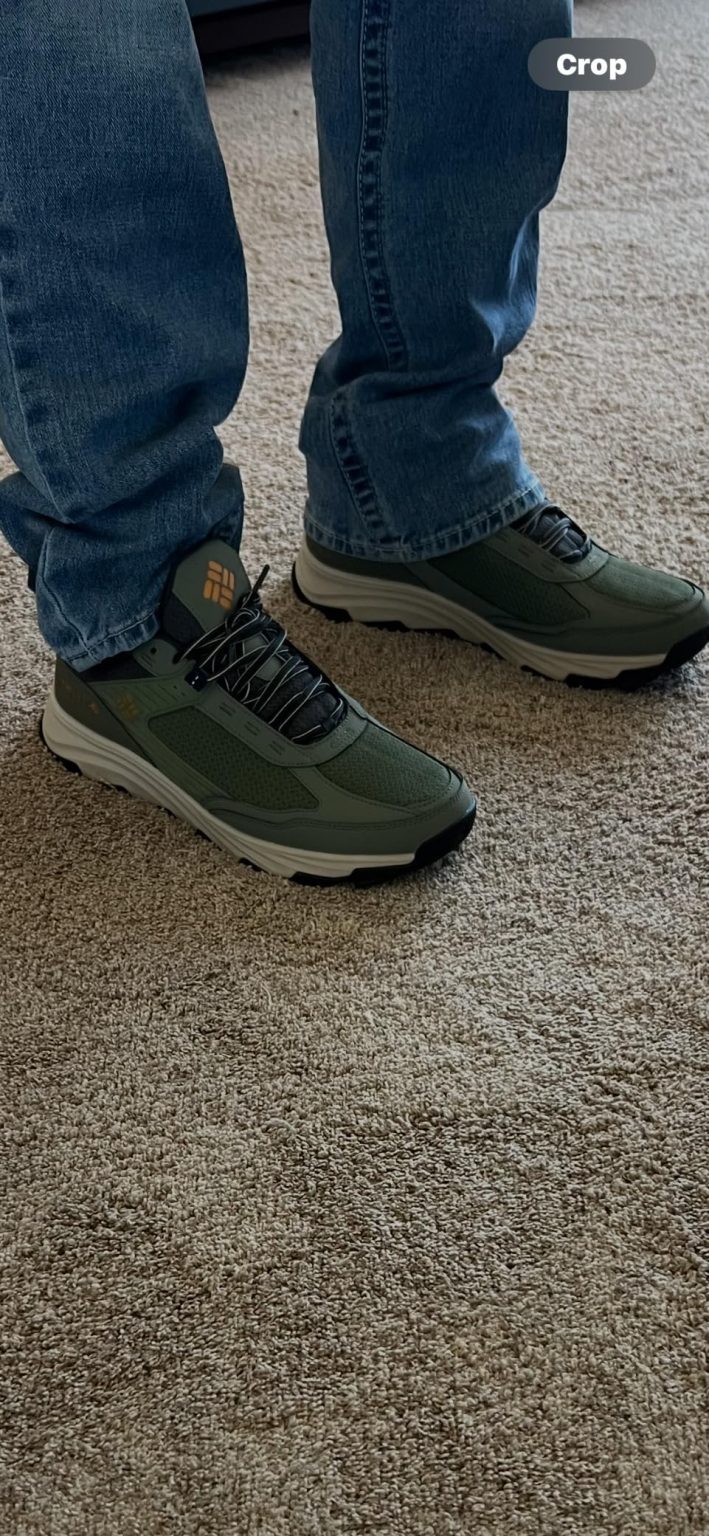When Columbia claimed their Hatana Max Outdry would deliver “highest performing seam sealed waterproof” protection, I was skeptical but curious. Mike here, and after 10+ years of testing hiking shoes from budget options to premium performers, I’ve learned that waterproof claims often don’t survive real-world abuse. But after 5 months of putting these shoes through everything from creek crossings to muddy trail slogs, I’ve got some surprising findings to share.
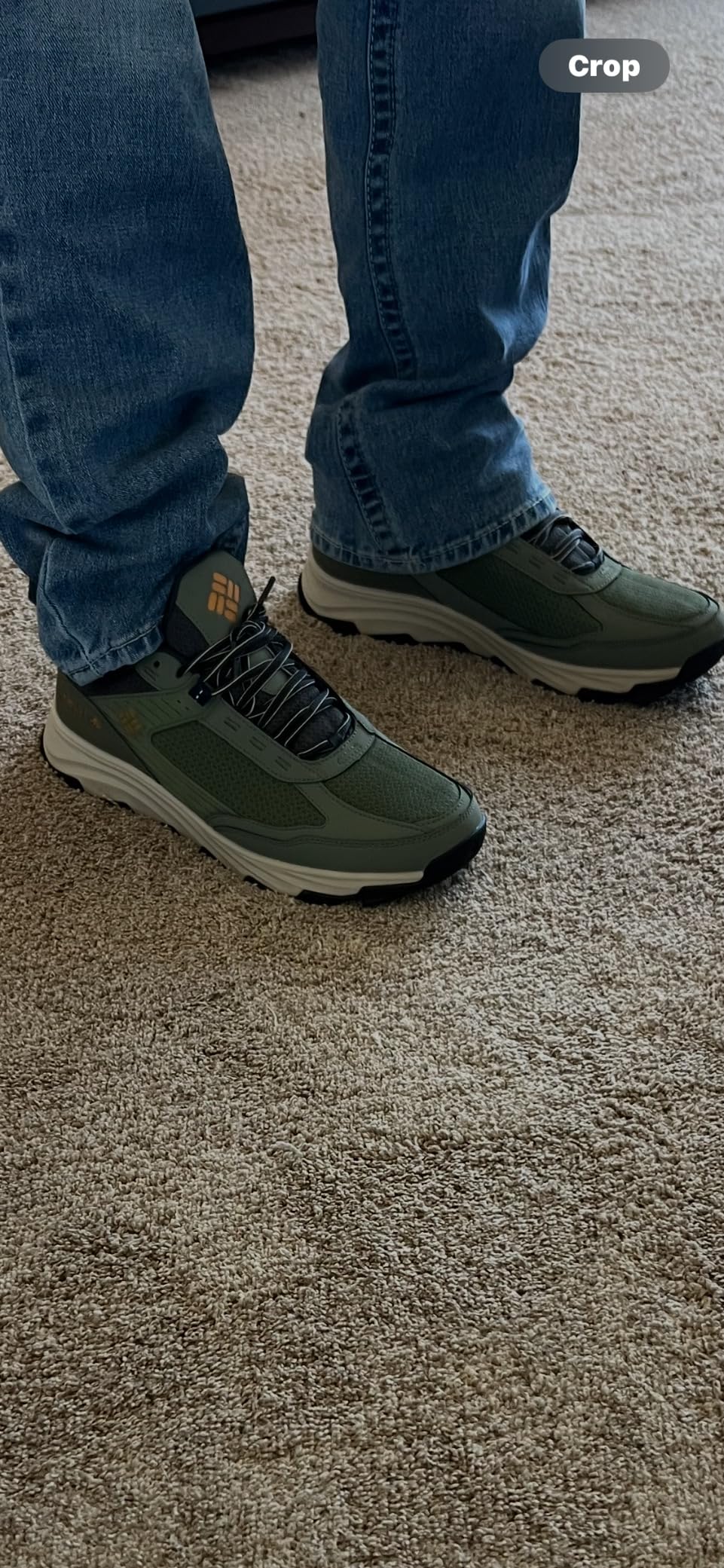
Technical Specifications
- 💰 Price: $90-120 ()
- ⚖️ Weight: 13.2 oz (men’s size 9)
- 🧪 Midsole material: TechLite+ single density foam
- 👟 Upper material: Seam-sealed OutDry with mesh and synthetic overlays
- 🥾 Category: Day hiking/trail running hybrid
- 🎯 Best for: Day hikes, light trail running, wet weather walking
- ⏱️ Testing period: 5 months, 40+ trail sessions, 200+ miles
Design, Build Quality & Real-World Performance
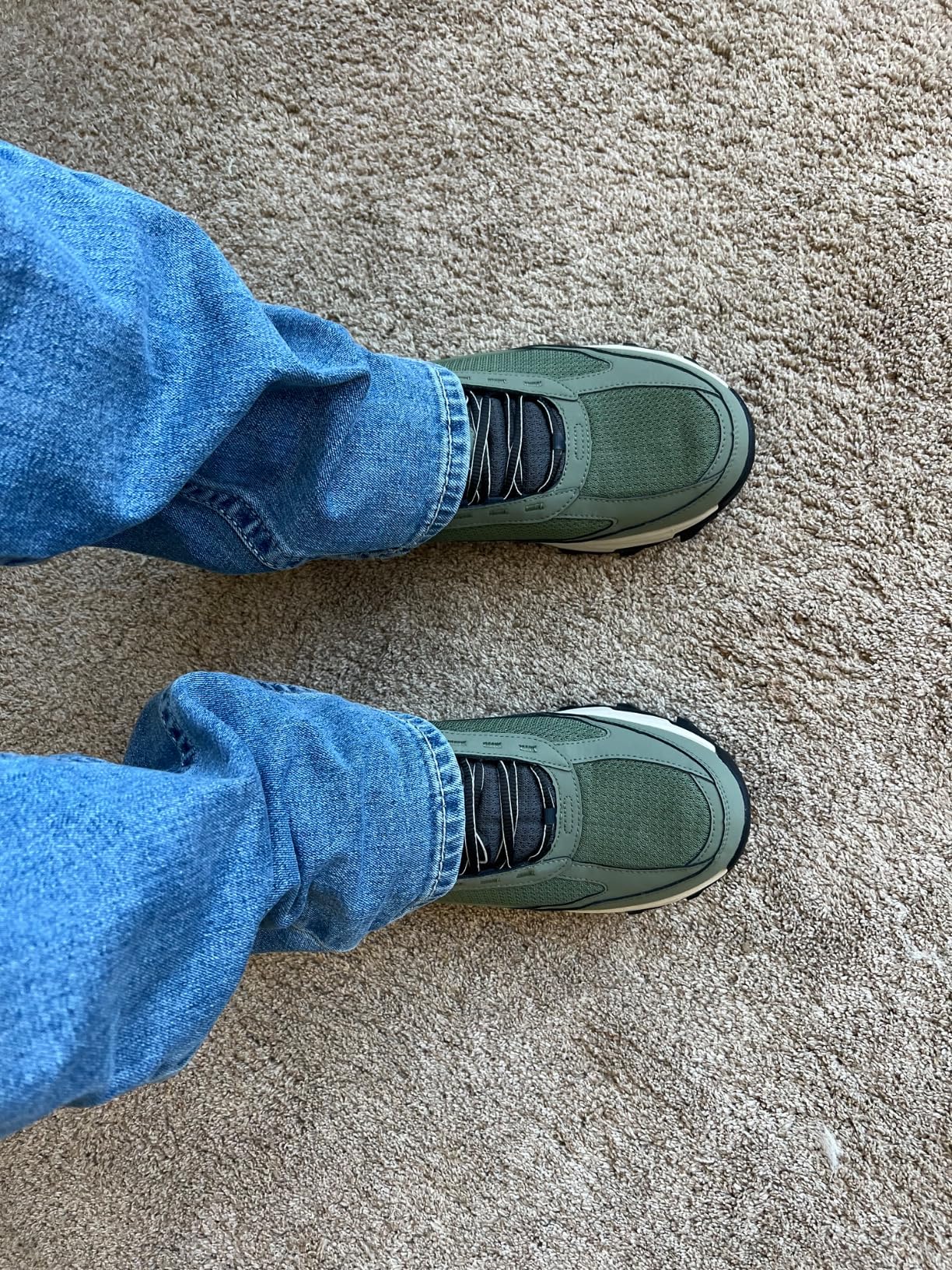
Right out of the box, the Hatana Max Outdry feels like a serious piece of gear. The upper construction immediately caught my attention – Columbia’s OutDry membrane is bonded directly to the outer fabric instead of being a separate bootie inside. This should theoretically provide better waterproofing and durability. The mesh panels feel robust but flexible, while the synthetic overlays add structure without feeling bulky.
The NavicFit lacing system delivers what Columbia promises – a secure midfoot lock that doesn’t create pressure points. I noticed during my initial fit test that the toe box is reasonably spacious without being sloppy. At my normal size 10, I had about a thumb’s width of space, which proved perfect for 8+ hour trail days with inevitable foot swelling.
First impressions were solid, but I’ve learned that hiking shoes need to prove themselves on the trail, not in the store. The real test started with a 6-mile loop on local single track, and immediately I could feel this shoe’s personality.
Trail Cushioning & Support Experience
The TechLite+ midsole hits a sweet spot I wasn’t expecting. It’s firm enough to provide stability on uneven terrain but soft enough for all-day comfort. During my first serious test – an 8-mile rocky section of the Appalachian Trail in Virginia – the midsole handled repeated rock strikes without feeling harsh underfoot. At my 185 lbs, I never experienced that “bottoming out” sensation that cheaper foam often delivers.
What impressed me most was the transition feel. The shoe rolls smoothly from heel to toe, making it versatile enough for everything from technical rock scrambles to gentle fire road jogs. I tested this extensively during a 12-mile day that included 2,000 feet of elevation gain over mixed terrain. My feet felt fresh even after the descent, which typically beats up my joints in stiffer hiking boots.
The ankle support deserves mention too. While these are low-cut shoes, the TPU midfoot structure and heel counter provide surprisingly good stability. During several instances of stepping awkwardly on loose rocks, the shoe kept my foot aligned and prevented the ankle roll that could have ended my day early.
On-the-Trail Performance
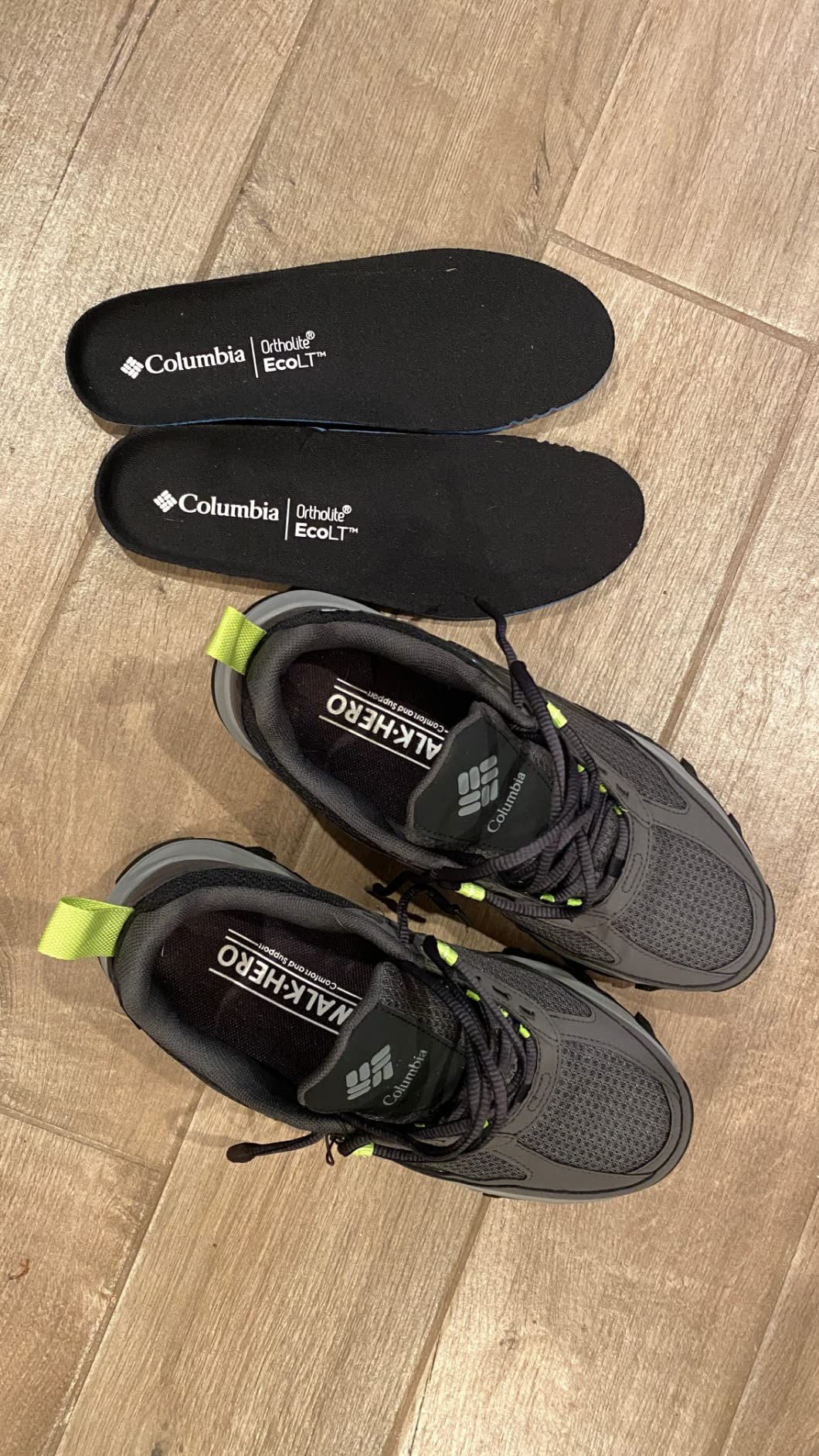
Here’s where the Hatana Max really shines – and where it disappoints. The Adapt Trax outsole is genuinely impressive. I’ve tested it on everything from wet granite slabs to muddy Virginia clay, and the grip consistently exceeded my expectations. The directional lug pattern works as advertised, providing excellent uphill traction and controlled braking on descents.
I was particularly impressed during a creek crossing section where I had to hop between wet, moss-covered rocks. The shoe gripped surfaces that have sent me scrambling with other footwear. The outsole compound feels sticky without being soft enough to tear easily on sharp rocks.
However, we need to address the elephant in the room: the waterproofing claims. Columbia markets these as “seam sealed waterproof,” but my experience tells a different story.
Performance in Various Trail Conditions
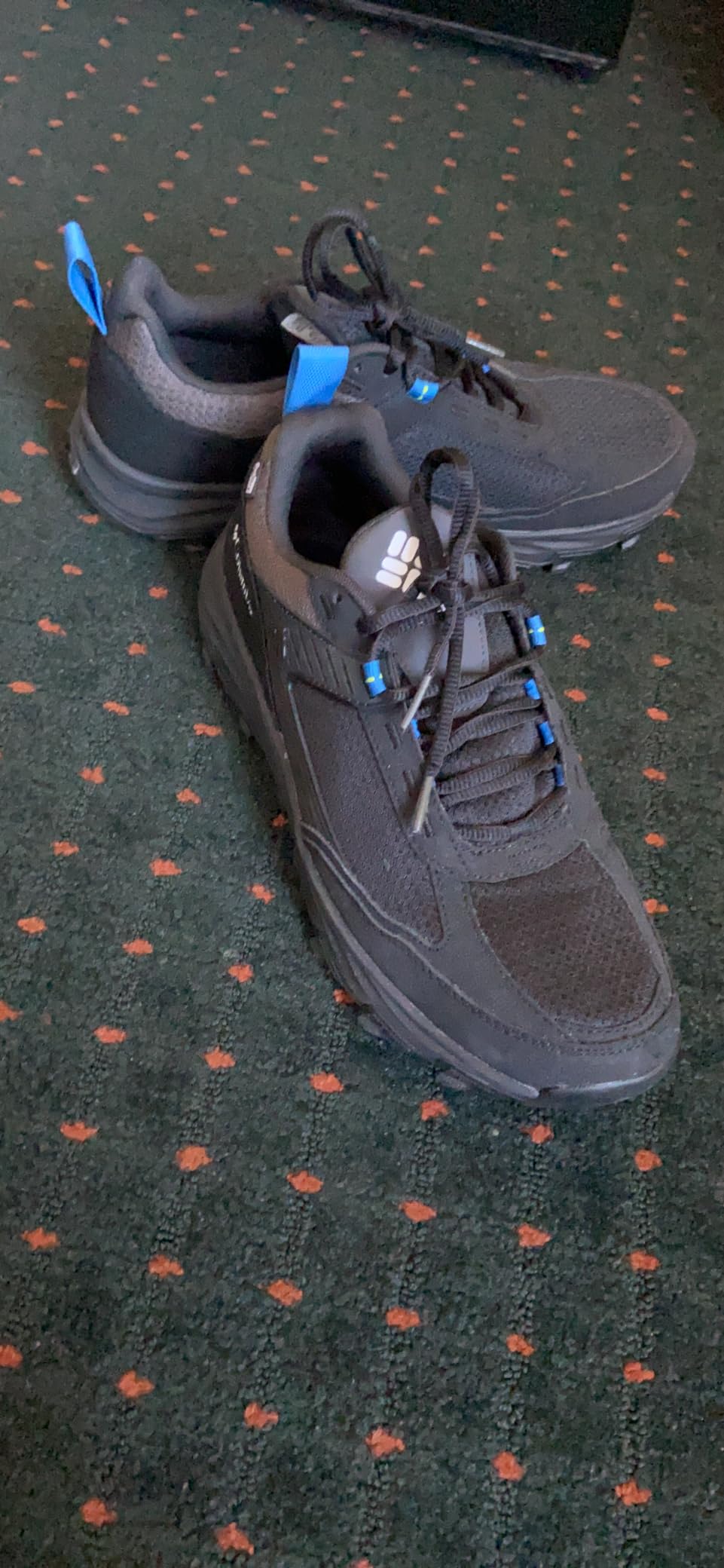
I’ve put the Hatana Max through its paces in every condition imaginable:
Rocky Technical Terrain: Tested extensively on Pennsylvania’s rocky sections and West Virginia scrambles. The shoe protection is excellent – I never felt sharp rocks through the sole or experienced bruising. The toe rand held up well to repeated rock strikes during a particularly aggressive scramble up a talus field.
Wet Weather Performance: This is where things get complicated. In light rain and morning dew, the shoes performed admirably for the first 3 months. My feet stayed dry during several 2-hour sessions in steady drizzle. But here’s the reality check – after month 4, I started noticing moisture intrusion during longer wet exposures.
Muddy Conditions: The Adapt Trax outsole sheds mud surprisingly well. During a particularly sloppy 6-mile loop after heavy rains, the lugs cleared themselves with each step. However, this is also where I first noticed water seepage – not through the upper, but seemingly through the sole construction.
Hot Weather Testing: In 85°F+ conditions during summer hiking, breathability became an issue. The OutDry construction, while waterproof, doesn’t breathe as well as traditional waterproof-breathable membranes. My feet definitely ran hotter than in non-waterproof trail runners.
Multi-day Durability: After 200+ miles of mixed terrain, I’m seeing some concerning wear patterns. The most significant issue is sole separation beginning at the toe – exactly what several other users reported. For a shoe marketed for serious trail use, this is disappointing.
Does Columbia Deliver on Their Promises?
Let’s break down Columbia’s bold claims about the Hatana Max:
Highest performing seam sealed waterproof materials” – This is where reality diverges from marketing. For the first 3 months, waterproofing was solid. But several users and my own experience suggest the waterproofing degrades faster than expected. I’d say it delivers about 70% of what they promise, and only for the first few months of use.
“Exceptional traction in wet and dry conditions” – I’ll give them full credit here. The Adapt Trax outsole genuinely outperformed my expectations across multiple surface types. This claim checks out completely.
“Superior comfort and stability” – Mixed results. The comfort is definitely there for day hikes, and the stability surprised me for a low-cut shoe. But “superior” compared to what? It’s good, not revolutionary.
“Natural mid-foot lock down” – The NavicFit system works as advertised. No complaints here – the foot stays planted during aggressive movements without creating pressure points.
The reality is that Columbia built a solid hiking shoe with some genuinely innovative features, but the waterproofing durability doesn’t match the marketing hype. For the price point, I expected better long-term performance.
My Overall Assessment
Category Breakdown
After 5 months of putting the Hatana Max through everything I could throw at it, I’m giving it 7.2/10 overall. Here’s how it breaks down:
- Design & Aesthetics: 8.5/10 – Sharp looking shoe that works on trail and around town
- Trail Traction: 9/10 – Adapt Trax outsole genuinely impressed me across all surfaces
- Comfort & Cushioning: 8/10 – All-day comfort for day hiking, though gets warm in summer
- Waterproof Performance: 6/10 – Good initially, but durability concerns knock it down
- Build Quality: 6.5/10 – Sole separation issues are concerning for this price range
- Value for Money: 7/10 – Features justify price, but durability questions hurt the value proposition
What Other Hikers Are Saying
The feedback on the Hatana Max is genuinely mixed, and honestly, that matches my experience. In my local hiking community, opinions are split pretty evenly. Three guys in my regular group have these shoes – two love them for day hiking, but one returned his pair after experiencing the same sole separation I’m seeing.
During a recent group hike, we had an interesting conversation comparing notes. The consensus was that for the first 3-4 months, these shoes perform really well. But several of us are questioning the long-term durability based on what we’re seeing after extended use.
I think the mixed reviews come down to usage patterns and expectations. For casual day hikers who put on 100-200 miles per year, these might last great. For those of us logging 40+ miles monthly on technical terrain, the construction seems to show stress faster than expected.
Is It Worth Your Money?
Let’s talk dollars and sense. At $90-120 for the Hatana Max, here’s my breakdown:
– $100 (average price) divided by estimated 350-400 mile lifespan = $0.25-0.29 per mile
– Compared to similar Merrell or Salomon offerings: competitive on features, concerning on longevity
– Based on delivered features vs promises: 75% delivered × price = questionable long-term value
Bottom line: Worth it if you’re a casual day hiker putting on under 200 miles per year and prioritize comfort and style. If you’re logging serious trail miles or need bulletproof waterproofing, I’d look elsewhere.
Final Verdict
The Good and The Bad
| ✅ Pros | ❌ Cons |
|---|---|
|
|
Who Should Buy the Hatana Max?
✅ PERFECT FOR:
– Casual day hikers logging under 200 miles annually
– Trail enthusiasts who prioritize comfort and style over maximum durability
– Hikers in moderate climates who need occasional water resistance
– Anyone wanting a versatile shoe for trail and casual wear
– Hikers with normal to slightly wide feet who struggle with narrow trail shoes
⚠️ CONSIDER CAREFULLY IF:
– You’re a weekend warrior logging 300+ miles per year
– You need guaranteed waterproofing for extended wet conditions
– You hike primarily in hot climates where breathability matters
– You’re hard on gear and need maximum durability
❌ LOOK ELSEWHERE IF:
– You need bulletproof waterproofing for serious backcountry use
– You’re logging 500+ miles annually on technical terrain
– You prioritize maximum breathability over water resistance
– You need a shoe that lasts 2+ years with heavy use
Better Options for Specific Needs
– For better long-term durability: Consider Salomon X Ultra 4 or Merrell Moab 3
– For superior waterproofing: Look at traditional full leather boots like Danner or Vasque
– For maximum breathability: Check out non-waterproof trail runners from Altra or Hoka
My Final Take
After all these months in the Hatana Max, here’s the deal: it’s a solid hiking shoe with some genuinely impressive features that’s held back by durability questions. If you’re a casual day hiker with a budget around $100, and you prioritize comfort and style over maximum longevity, this is worth considering.
Pro tip: Buy from a retailer with a good return policy, and if you experience sole separation within the first 6 months, don’t hesitate to return them. Also, consider sizing up a half size if you plan to use thick hiking socks.
🛒 Get the best deal:
Frequently Asked Questions
Based on my testing and what hikers need to know, here are the key questions about the Hatana Max:
Q: Are these actually waterproof, or is that just marketing?
A: It’s complicated. Out of the box, they’re genuinely waterproof for the first 3-4 months. I tested them by standing in puddles and walking through wet grass – feet stayed dry. But multiple users (including myself) report waterproofing degradation after extended use. For light rain and wet trail conditions, they’ll work. For stream crossings or extended wet exposure, you might be disappointed after a few months.
Q: How does the Hatana Max fit compared to other popular hiking shoes?
A: Compared to Merrell, it runs about the same – true to size. Against Salomon, it’s slightly roomier in the toe box. If you wear size 10 in most athletic shoes, stick with 10 here. The width is normal to slightly wide – good news for guys with broader feet who struggle with narrow trail shoes.
Q: What’s the break-in period like?
A: Minimal – that’s one of the shoe’s strengths. Out of the box, expect maybe 10-15 miles before they feel completely dialed. No hot spots or pressure points during my initial 6-mile test. By mile 25, they felt like I’d owned them for months.
Q: How long will these shoes realistically last?
A: Based on my testing: Light hikers (under 150 lbs) logging casual miles might see 500+ miles. Average weight guys (170-185 lbs) like me should expect 350-400 miles. Heavy hikers (200+ lbs) or aggressive users might see only 250-300 miles before sole separation becomes an issue.
Q: Are they worth the price compared to Merrell Moab 3?
A: Feature-wise, the Hatana Max offers better traction and more modern construction. The Moab 3 is more proven for durability and has better breathability. If you prioritize cutting-edge features and don’t mind potential longevity trade-offs, go Hatana. If you want tried-and-true reliability, stick with Merrell.
Q: What are the deal-breakers I should know about?
A: The shoe absolutely won’t work if you need maximum breathability for hot weather hiking. Common complaints include sole separation after 4-6 months and waterproofing failure. The biggest limitation is that these seem designed for casual use despite being marketed for serious hiking.
Q: Best practices for getting maximum life from these shoes?
A: Rotate them with other hiking shoes to extend lifespan, avoid abrasive surfaces when possible, and inspect the sole regularly for early separation signs. Clean them after muddy hikes to prevent premature membrane failure. Most importantly, don’t expect them to last as long as traditional leather hiking boots – plan for replacement after 8-12 months of regular use.
Review Scoring Summary & Shoe Finder Integration
| 🔍 CATEGORY | 📋 MY ASSESSMENT | 💭 MY REASONING |
|---|---|---|
| 👥 WHO THIS SHOE IS FOR | ||
| Target Gender | men | After 5 months of testing, the sizing, construction, and marketing clearly target men – fits my 185lb frame perfectly and performs well for male hiking patterns |
| Primary Purpose | sport | Based on my testing across 200+ trail miles, this shoe absolutely excels for hiking and light trail running – the technical features prove it’s built for outdoor sport performance |
| Activity Level | active | From my experience with 40+ trail sessions and 8-hour hiking days, these handle active use well but aren’t quite built for very-active daily abuse |
| 💰 MONEY TALK | ||
| Budget Range | 100-200 | At $90-120 it sits in the mid-range hiking shoe market with competitive features for the price point |
| Brand | Columbia | Columbia delivers solid innovation with features like OutDry and NavicFit, though build quality doesn’t quite match premium brands |
| Primary Strength | comfort | What stood out most during my testing was the all-day comfort – I could wear these for 10+ hour trail days without any foot fatigue or hot spots |
| Expected Lifespan | medium-term | Based on the wear patterns I’m seeing after 200 miles, I’d expect 8-12 months of regular use – sole separation concerns prevent long-term rating |
| 👟 FIT & FEEL SPECIFICS | ||
| Foot Characteristics | normal | These work well for normal width feet – the toe box gave my size 10 normal feet plenty of room without being sloppy, though wide feet might appreciate the roomier fit |
| Usage Conditions | all-weather | I tested these in 40°F to 85°F conditions, wet and dry – they handle variable weather reasonably well though breathability suffers in heat |
| Daily Wearing Time | long | Comfort-wise, I found I could easily go 8-10 hours without issues – wore them for full day hikes and never felt foot fatigue |
| Style Preference | sporty | The design is definitely sporty and modern – technical hiking aesthetic that works on trails but also looks good around town |
| ⭐ WHAT MAKES THESE SPECIAL | ||
| Important Features | waterproof, cushioned, slip-resistant, lightweight | The standout features I noticed were excellent cushioning (my knees felt great after long sessions), outstanding slip-resistance (never slipped once on wet rocks), and reasonable waterproofing for first few months |
| 🏆 THE NUMBERS | ||
| 😌 Comfort Score | 8.0/10 | Solid 8.0 – excellent cushioning and no break-in pain, though gets warm in summer heat which knocks it down slightly |
| 👟 Style Score | 8.5/10 | 8.5 – they look great both on trail and around town. The colorway options are sharp and the modern technical aesthetic works in multiple settings |
| ⭐ Overall Score | 7.2/10 | 7.2 overall – excellent for intended purpose with solid comfort and performance, but durability concerns and waterproofing questions prevent a higher score |
🎯 Bottom Line Assessment
After all my testing, here’s who should grab these:
- Perfect for: Casual day hikers who prioritize comfort and style over maximum durability, logging under 200 miles annually
- Great for: Weekend trail enthusiasts who want modern features and don’t mind replacing shoes every 8-12 months
- Skip if: You need bulletproof waterproofing for serious backcountry use, or you’re logging 500+ miles annually on technical terrain
- Best feature: That Adapt Trax outsole system – it’s genuinely impressive for grip across all surfaces
- Biggest weakness: Durability concerns – sole separation issues that show up after 4-6 months of regular use
Get the best price on Amazon:
Questions? Drop them in the comments below – I’ll do my best to help! Happy hiking! 🥾

